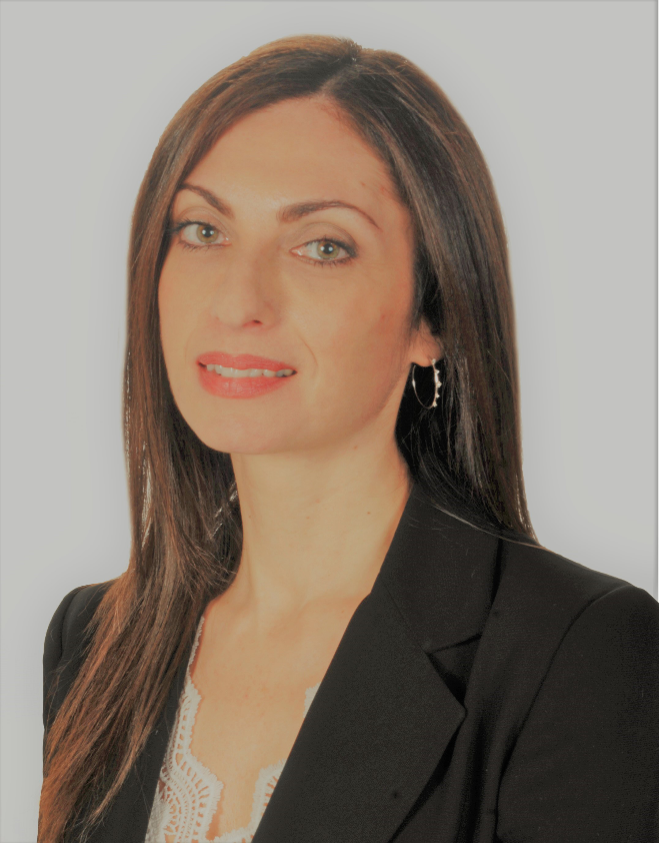Research
In an era where artificial intelligence dances harmoniously with human creativity, a groundbreaking project is reshaping the way literary works cross linguistic and cultural frontiers. The project, titled “How Can MT and PE Help Literature Cross Borders and Reach Wider Audiences? A Case Study“ explores the powerful synergy between Machine Translation (MT) and Post-Editing (PE) in literary translation, revealing new possibilities for literature to be experienced beyond its original language. Funded by Translated’s Research Centre Imminent, this initiative not only demonstrates technological prowess but also underscores the irreplaceable value of human insight in preserving the soul of creative texts.
Guided by a distinguished interdisciplinary team—Dr. Vilelmini Sosoni from Ionian University, Dr. George Mikros from Hamad Bin Khalifa University, Ms. Kelly Polychroniou from Boston University, and Dr. Vasilis Manousakis from the University of Patras—this study centres on the English translation of Tango in Blue Nights (2024), a compelling collection of 35 flash fiction stories by Vasilis Manousakis. These tales weave together noir intrigue, romantic realism, and introspective themes with cinematic imagery, creating a narrative universe rich in intertextual references to films, songs, and classic literature. By highlighting the project’s innovative methods, remarkable findings, and far-reaching implications, this article aims to present the transformative potential of blending AI efficiency with artistic finesse, ultimately making global literature more accessible and vibrant.
The Enduring Challenge of Literary Translation in the Age of AI
Literary translation has long been revered as an art form that transcends mere linguistic conversion. It demands a profound sensitivity to nuance, rhythm, cultural context, and emotional resonance—elements that define the essence of a story. Traditionally, translators have viewed machine translation with skepticism, particularly for highly creative works where the “more creative the literary text, the less useful MT is,” as noted in perceptions studies. Research has shown that human translation is often preferred by readers over post-edited MT outputs due to concerns about creativity and readability. Yet, as neural MT systems evolve, they promise gains in productivity, efficiency, and accessibility, prompting questions about their viability in literary domains.
This project confronts these challenges head-on by asking pivotal questions: Is MT capable of producing drafts “good enough” for post-editing in literary contexts? How can PE protocols be tailored to preserve stylistic integrity? And what insights do authors themselves offer when involved in the process? By addressing these, the study bridges computational linguistics and literary studies, offering a model for how technology can amplify, rather than diminish, human creativity.
The allure lies in its potential to democratize literature. Imagine lesser-known works from languages like Greek or Arabic reaching English-speaking audiences faster and at lower costs, fostering cultural exchange in a globalized world. This isn’t just about translation; it’s about expanding horizons. In the case at hand, it’s about Manousakis’ stories of love, loss, and inner journeys in Tango in Blue Nights becoming universal treasures.
Why Tango in Blue Nights? A Perfect Literary Laboratory
Selecting Tango in Blue Nights as the case study was no accident. This anthology comprises 35 flash fiction stories, each a compact masterpiece spanning just two to four pages. Divided into two sections: “Travels” and “Images and Movement,” the narratives explore themes of desire, doubt, relationships, inner development, and memories. Manousakis, a writer, poet, and translator, crafts tales that blend genres— from shadowy noir to tender romanticism—infused with cinematic imagery and rich intertextuality.
Is MT capable of producing drafts “good enough” for post-editing in literary contexts? How can PE protocols be tailored to preserve stylistic integrity? And what insights do authors themselves offer when involved in the process?
The book’s challenges for translation are manifold. Its brevity condenses meaning, leaving much implied and requiring translators to infer subtleties. Cinematic elements, such as vivid scene-setting reminiscent of film noir, demand precise rendering to evoke the same visual and emotional impact. Intertextual nods to global cultural artifacts—songs, films, and literary texts—create a unique narrative universe that risks dilution if not handled with care. For MT systems, these features test limits: how well can algorithms capture implied meanings, stylistic shifts, or the “breath-like” phrasing that mirrors protagonists’ turmoil?
Manousakis’s dual role as author and professional translator added depth, allowing him to provide reference translations and actively participate in editing. This made the book an ideal proving ground, showcasing how MT and PE can tackle real-world literary complexities while highlighting the need for human oversight.
Methodological Mastery: From MT Drafts to Stylometric Scrutiny
The project’s methodology is a testament to innovation, beginning with the translation of the Greek text into English using Translated’s advanced ModernMT system. To evaluate the MT output, the team analyzed nine stories using a suite of automatic metrics: BERTScore (assessing semantic similarity), BLEURT and COMET (focusing on fluency and adequacy), BLEU and ChrF (measuring n-gram overlaps), and TER (quantifying edit distance).
Results were promising yet revealing. BERTScores averaged around 86-91, indicating strong semantic fidelity, while TER varied from 38% to 70%, suggesting varying edit needs. For instance, “Morte Subite” scored a low TER of 38.74, implying fewer changes, whereas “I Am Nobody, Who Are You?” required more at 69.8. These metrics confirmed MT’s strength in literal accuracy but hinted at gaps in fluency and style.
To approach style empirically, the team led by George Mikros applied Burrows’ Delta—an established stylometric method from authorship attribution—to quantify the distance between human translations and MT outputs. By focusing on patterns across frequent words and deviations from a normative profile, Delta reframes style as measurable signal rather than ineffable aura, allowing the team to compare how closely different versions “sounded” in aggregate—even when semantics were adequate. This hybrid of literary sensitivity and computational rigor helped identify where cadence, lexis, or rhythm needed human re-calibration to remain faithful not only to what is said but to how it is said. The team innovated further with the development of Stylometric Translation Quality Index (STQI), a 0-1 scale combining stylistic disorder and lexical richness. STQI scores were lower, often below 0.4, correlating with BLEU and TER but highlighting stylistic divergences more sharply. “Piano Lessons” scored a mere 0.11, versus 0.42 for “Messed Up Brain,” underscoring MT’s struggle with authorial voice.
This hybrid of literary sensitivity and computational rigor helped identify where cadence, lexis, or rhythm needed human re-calibration to remain faithful not only to what is said but to how it is said.
This dual evaluation—semantic via traditional metrics and stylistic via STQI—represents a breakthrough, enabling translators to identify when MT “gets the meaning right but loses the author’s voice,” essential for literary re-creation.
The Heart of the Process
Recognizing MT’s limitations, the team developed a comprehensive PE protocol specifically for literary and creative texts. This isn’t a generic checklist; it’s a nuanced guide emphasizing preservation of imagery, rhythm, and emotional evocation while correcting errors.
A Tailored Post-Editing Protocol
1. Ensure Completeness: Make sure that no part of the original text has been omitted.
2. Verify Full Translation: Make sure that no part of the original text has been left untranslated.
3. Correct Terminology: Correct any terminological errors.
4. Maintain Consistency: Make any necessary changes to ensure terminological and phraseological consistency.
5. Avoid Additions: Ensure that the translation does not include text that is not in the original, i.e., that there is no unnecessary addition to the translation.
6. Eliminate Hallucinations: Check for hallucinations and delete them.
7. Fix Grammar and Syntax: Correct any grammatical and syntactic mistakes, making any necessary changes to the word order or the syntactic structure so that the translation has the same communicative dynamism as the original.
8. Adhere to Punctuation: Check that the punctuation conventions of the target language have been respected.
9. Handle Proper Names: Check that proper names have been transferred accurately in the translation. Please translate place names using the established forms, e.g., Montenegro. Please make a choice between transliteration of human names and translation of human names depending on the circumstances, e.g., Katerina left or Kate left depending on whether it should remain clear that the heroine is Greek or not, O George went to Switzerland or Yiorgos went to Switzerland. In the first case, when we adapt the name and use George, we don’t want to anchor the name and person to a particular location, ethnicity, etc.
10. Correct Spelling: Correct spelling mistakes or typos.
11. Refine Style: Correct any stylistic mistakes and mishaps and ensure that the translation is as idiomatic as the original and flows just like the original, while evoking similar emotions to the reader.
12. Preserve Imagery: Make the necessary changes to ensure that the translation adequately conveys any imagery found in the original.
13. Localize Elements: Make local adaptations/localization where necessary e.g., units of measurement, addresses, phone numbers, conventions regarding numbers etc. For instance, you may have to change feet to metres or miles to kilometres, and you have to change 0,6 in Greek to 0.6 in English, or 28 in Greek to 28 Akadimias street in English, etc.
14. Balance Editing: Be careful not to over-edit i.e., do not make preferential changes that are unnecessary. Be careful not to under-edit i.e., don’t make less changes than necessary. Don’t be fooled by the fluency of the translation, as there might be hidden accuracy errors.
This protocol was applied by 11 Boston University students—native English speakers with near-native Greek skills—trained over sessions emphasizing not just error correction but stylistic sensitivity. Each edited three to four stories over a month, consulting Manousakis for clarifications. He then refined their work, followed by Sosoni’s final edits, yielding a publishable English edition.
Insights from the Post-Editing Journey
The students, already MT users for learning and quick queries, rated MT quality at 3.64/5 on average and viewed PE as essential for accuracy and “human feel.” Eight preferred PE over translating from scratch, citing efficiency.
Error analysis using an adapted Multidimensional Quality Metrics (MQM) typology and TER (0.269 overall, or 27 edits per 100 tokens) revealed patterns: 43% fluency errors (syntax, collocations), 32% style issues (register, voice), 22% accuracy problems (idioms, names), and 3% locale conventions. Substitutions dominated (4,661), indicating rephrasing for idiomaticity, with minor errors (66%) outnumbering major (32%) and critical (2%).
Manousakis’ and Sosoni’s input was pivotal. They corrected gender ambiguities (common in pro-drop Greek), smoothed unidiomatic phrasing, and curbed over-editing to retain his “short breaths” style, ensuring the English text mirrored the original’s atmosphere.
Transformative Impact: Redefining Literary Accessibility and Scaling the Revolution
The project’s success lies in its demonstration that MT, when paired with specialized PE and author collaboration, can produce high-quality literary translations efficiently. Strengths include MT’s handling of content and literal meaning, while limitations in tone and voice are mitigated by human intervention. The STQI metric emerges as a tool for future evaluations, particularly in creative genres.
The project’s success lies in its demonstration that MT, when paired with specialized PE and author collaboration, can produce high-quality literary translations efficiently.
Broader implications are profound. The project promotes interdisciplinary collaborations, specialized training for post-editors, and author-translator partnerships, potentially accelerating the global flow of literature from underrepresented languages.
In Manousakis’ words, these stories were “lived once in Greek and lived again in English through measurement, mentoring, and making”. This case study invites a future where AI empowers literature to transcend borders, blending technology with humanity for a more connected world.
Expanding Horizons: Theoretical Foundations and Comparative Analysis
To fully appreciate the project’s impact, consider its roots in prior research. Studies like Toral, Wieling, and Way (2018) explored post-editing efforts for novels using statistical and neural MT, finding productivity gains but stylistic challenges. Moorkens et al. (2018) surveyed translators’ perceptions, noting caution toward MT for creative texts. Guerberof-Arenas and Toral (2020, 2022) examined creativity and reader experience, revealing that post-edited MT can rival human translation in engagement when edited thoughtfully. Vanroy et al. (2023) introduced tools like MATEO for online MT evaluation, which this project leverages.
Comparatively, this study advances the field by integrating stylometry and author involvement, addressing gaps in previous works that overlooked stylistic metrics or creator perspectives. Unlike efforts focused on high-resource languages, it tackles Greek-English pairs, highlighting MT’s potential for lesser-resourced contexts.
Case Studies from the Anthology: Bringing Findings to Life
Delving into specific stories illustrates the methodology’s efficacy. In “Noir,” MT scored high on BERT (91.09) but low on STQI (0.23), indicating semantic success but stylistic loss. PE restored shadowy phrasing and intertextual nods to film noir, with substitutions fixing awkward collocations.
“Piano Lessons” exemplified over-editing risks: MT’s literal output prompted expansions, but Manousakis trimmed them to preserve rhythmic sparsity, evoking the protagonist’s emotional fragmentation. “Wings of Desire,” with its cinematic references, required localization of names and imagery, ensuring English readers felt the same ethereal pull.
Ultimately, this work paves the way for a literary ecosystem where technology amplifies human artistry, ensuring stories like those in Tango in Blue Nights inspire across borders.
These examples underscore how the protocol balances fidelity and adaptation, turning MT drafts into resonant literature.
Pedagogical and Industry Ramifications
For education, the project models PE training integration into translation curricula, preparing students for AI-augmented workflows. Boston University’s involvement shows how academic programs can foster bilingual talent equipped for literary PE.
In industry, publishers could adopt similar protocols to translate backlists efficiently, boosting diversity in global markets. The emphasis on avoiding over- or under-editing offers practical guidance for freelancers navigating MT tools.
Future Directions
Looking ahead, expanding STQI to other languages and genres could standardize literary MT evaluation. Collaborations with GenAI for creative enhancements, or studies on reader reception of post-edited texts, promise further insights. Ultimately, this work paves the way for a literary ecosystem where technology amplifies human artistry, ensuring stories like those in Tango in Blue Nights inspire across borders.
about the authors

Vilelmini Sosoni
Associate Professor at the Department of Foreign Languages, Translation and Interpreting at the Ionian University in Greece
Vilelmini Sosoni is a tenured Associate Professor at the Department of Foreign Languages, Translation and Interpreting of the Ionian University, Greece, where she also serves as Associate Head. She directs both the Lifelong Training Centre and the Research Lab for Specialised Translation and Language Technologies, and has previously taught at several UK universities, including Surrey, Westminster and Roehampton. Her research spans institutional and political translation, corpus linguistics, audiovisual translation, accessibility, and the intersection of machine translation, creativity and cognitive science. A founding member of the Greek Chapter of Women in Localization, she has led and contributed to numerous EU-funded projects and recently received an Imminent grant for her research on machine translation and post-editing in literary translation.

George Mikros
Professor of Computational and Quantitative Linguistics at Hamad Bin Khalifa University
George Mikros is Professor at the MA Program in Digital Humanities at Hamad Bin Khalifa University (HBKU) and Adjunct Professor at the University of Massachusetts Boston. Formerly Professor of Computational and Quantitative Linguistics at the University of Athens, he directs the Computational Stylistics Lab and has been a leading figure in developing NLP tools and language resources for Modern Greek. He has authored five monographs and over 80 peer-reviewed papers, and currently serves as President of the International Association of Quantitative Linguistics (IQLA). A frequent keynote speaker at international conferences, his research spans computational stylistics, quantitative and forensic linguistics, and digital humanities.

Kelly Polychroniou
Head of Modern Greek Program, Master Lecturer in Modern Greek at Boston University
Kelly Polychroniou is Master Lecturer in Modern Greek and Head of the Modern Greek Language Program at Boston University. She holds a BA in German Language and Literature from the University of Athens, an MA in Applied Linguistics from the University of Massachusetts Boston, and is currently a PhD candidate at the University of Ioannina. Her research focuses on the use of Large Language Models in teaching Modern Greek as a foreign language. She has taught at numerous institutions, including Tufts, Northeastern, and the American College of Greece. In 2012, she founded the BU Philhellenes Project, promoting Greek language and culture through immersive programs in Greece. She has been recognized with awards for her cultural work, including the 2019 Greek Culture Award from EXALEIPTRON.

Vasilis Manousakis
Short-story writer, poet, and translator
Vasilis Manousakis is a short-story writer, poet, and translator whose work has appeared in New American Writing, Hayden’s Ferry Review, Barcelona Ink, Parentheses, and Drunken Boat, among others. A founding member of Bonsai Stories, the flash fiction blog linked to Planodion literary magazine, he has edited several printed volumes featuring international writers. He holds a PhD in Contemporary American Poetry and teaches Creative Writing, Short Fiction, and Audiovisual Translation at the University of Patras and the American College of Greece, where he also designed seminars in both fields. His interdisciplinary work bridges literature and psychology: trained in Mental Health Counselling, he specializes in Cognitive Behavioral and Narrative Therapy.
